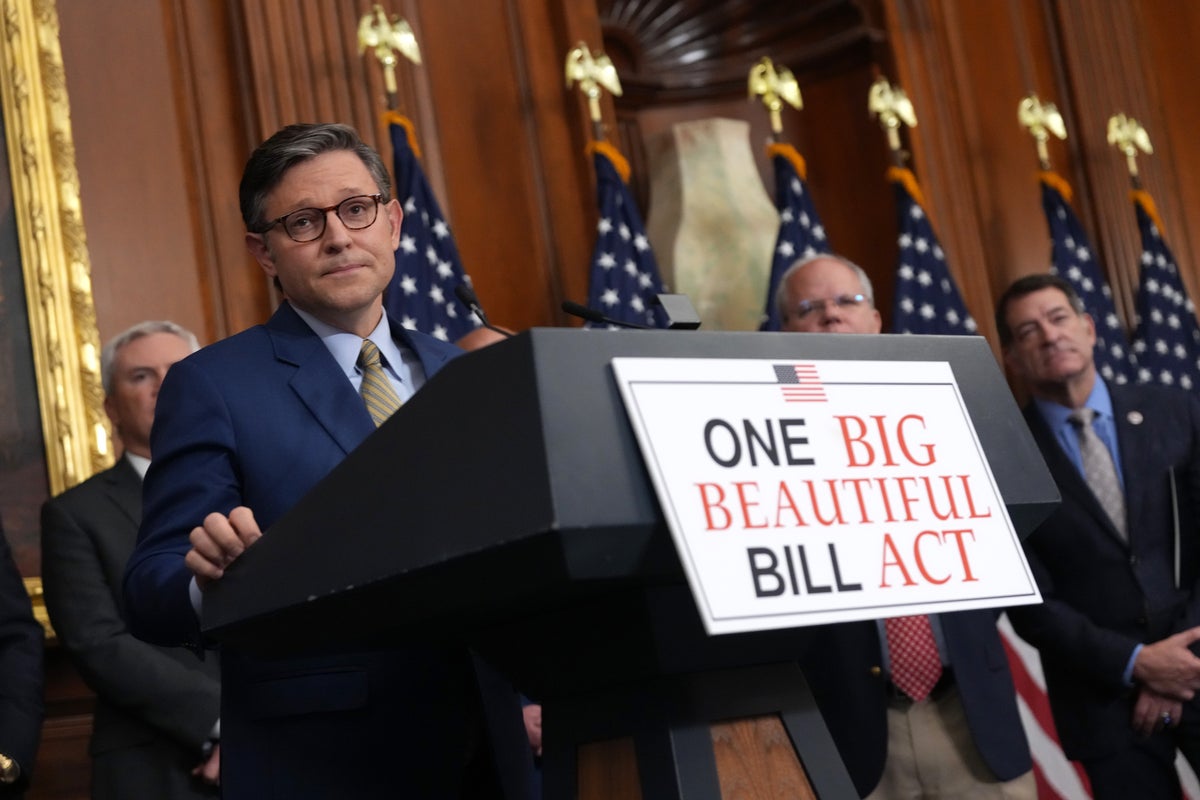Now Reading: One Big Beautiful Bill Act Called a Clean Energy ‘Nightmare Scenario’
-
01
One Big Beautiful Bill Act Called a Clean Energy ‘Nightmare Scenario’
One Big Beautiful Bill Act Called a Clean Energy ‘Nightmare Scenario’

CLIMATEWIRE | The clean energy transition may soon be on its own.
The “One Big Beautiful Bill Act” passed last week by the House would effectively end most clean energy tax credits, reversing a large chunk of former President Joe Biden’s climate agenda.
Wind and solar projects would need to begin construction within 60 days of the bill’s passage — or start operations within two years — to receive the credits before they expire. Clean energy factories that use Chinese inputs or equipment would essentially be barred from receiving federal money. Tax credits for electric vehicles would be gone entirely by the end of next year.
On supporting science journalism
If you’re enjoying this article, consider supporting our award-winning journalism by subscribing. By purchasing a subscription you are helping to ensure the future of impactful stories about the discoveries and ideas shaping our world today.
“It is definitely massive headwinds,” said Sam Huntington, director of North American power research at S&P Global Commodity Insights. “If the bill goes through as the House has set it up, that is a pretty bleak scenario for the next few years, at least.”
S&P estimates cumulative wind, solar and battery installations would fall 20 percent through 2040. BloombergNEF has called the House bill — which still needs to clear the Senate — “the nightmare scenario for US clean energy advocates.”
Many analysts think the bill’s spending cuts will be watered down in the Senate. ClearView Energy Partners, a research firm, termed the bill “a high water-mark” for rollbacks in a note to clients.
But the U.S. policy direction is clear. As climate change accelerates, Republicans are slowing efforts to green the energy system.
Some analysts argue it was always unrealistic to transform an energy system that powers factories, fuels cars and heat homes in the short time frames set by Democrats’ 2022 climate law, the Inflation Reduction Act. The tax credits for electric vehicles, for instance, have not fundamentally altered gasoline demand, which has remained steady despite an uptick in EV sales, said Robert McNally, president of the Rapidan Energy Group.
At the same time, analysts say the clean energy transition is already on its way — with or without financial incentives.
Arjun Murti, a partner at the research firm Veriten, predicted electric vehicles and zero-carbon electricity resources like solar and batteries would continue to grow over the next 30 years, even if deployments do not reach levels projected in net-zero emission models. Both technologies are mature and increasingly competitive with fossil fuel resources, he said.
“Solar plus batteries and electric vehicles are two areas where you’re going to get growth with or without tax credits,” Murti said. “People are too pessimistic on these new technologies assuming they need all the financial and fiscal support.”
“There are good reasons,” he added, “to use them other than climate change.”
Emissions backslide
The math of a warming planet is unrelenting. The United Nations International Panel on Climate Change has said the risks of extreme weather like floods, drought and wildfire increase each time the world warms by a tenth of a degree.
Planet-warming emissions reached a record 37.5 billion metric tons in 2024, according to the Global Carbon Project. The world has six years at 2024 levels before global temperatures are likely to surpass 1.5 degrees Celsius and 27 years before they eclipse 2 degrees, GCP estimated.
Emissions growth has slowed in recent years, but greenhouse gas levels have still edged higher thanks to a predictable pattern. While emissions in the U.S. and Europe fell, they grew in developing countries, particularly China and India.
Those patterns may be changing.
There are emerging signs of a structural emissions plateau in China, where electric vehicle adoption is surging and the country is bringing on large amounts of renewable electricity to complement its massive coal fleet. Indian emissions continue to rise on the back of rising coal consumption.
The U.S., meanwhile, may be on the verge of backsliding.
American emissions have trended downward for most of the last 15 years, including President Donald Trump’s first term, thanks to the combination of cheap natural gas, rising renewables deployments and stagnant electricity demand, which led to a wave of coal plant retirements.
But electricity demand is skyrocketing now, amid a boom in artificial intelligence and data centers, prompting America’s remaining coal plants to run harder and fueling increased demand for natural gas.
Three months is not enough time to constitute a trend, but the first quarter of 2025 offers a window of the potential road ahead. U.S. emissions were up 5 percent, or by 62 million tons, compared to the first quarter of 2024, according to Carbon Monitor, an emission tracker.
Half of that increase was due to rising emissions from the power sector, the industry most responsible for declining U.S. emissions in recent years.
That is the climate backdrop for discussions over Republicans’ budget bill. Analysts said solar is by far the best placed of U.S. clean energy industries to weather the storm. Even accounting for Trump’s recent tariffs, solar is likely to remain economically competitive with gas, analysts said.
But the picture is cloudier for batteries and downright gloomy for wind.
Manufacturing of stationary batteries used in the power sector is dominated by China, making them uniquely vulnerable to Trump’s trade war. Wind projects already faced siting and transmission challenges before Trump took office and Congressional Republicans took an ax to the IRA’s tax credits.
The IRA provided generous subsidies to entice companies to make components for clean energy industries in the U.S. But strict limits on foreign entities of concern, namely on China, will make it hard for clean energy manufacturers to claim those credits, said Antoine Vagneur-Jones, head of supply chain research at BNEF.
Five years ago, the economic and political stars appeared to be aligned for climate action, said McNally, the Rapidan analyst. Interest rates were low, meaning financing for clean energy projects was cheap. The world was not beset by any major wars. And large countries were led by governments prioritizing climate change.
Today, interest rates are high. Wars in Ukraine and the Middle East have prompted countries to prioritize energy security and affordability. And populist governments are in power in much of the world, McNally said.
“Every one of those stars have gone out,” he said.
Reprinted from E&E News with permission from POLITICO, LLC. Copyright 2025. E&E News provides essential news for energy and environment professionals.























